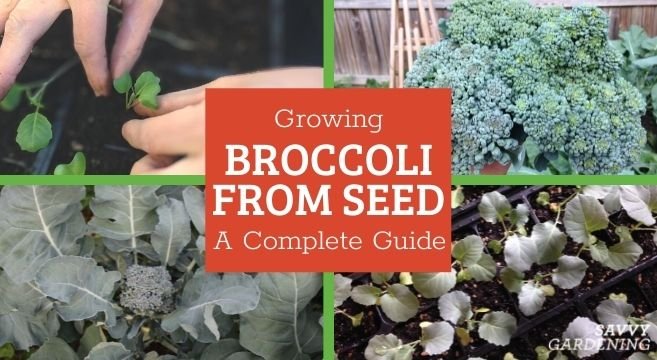
Want to learn how to grow broccoli from seed for your backyard garden? Keep reading for some great tips and tricks to help you grow fantastic broccoli!
Broccoli is not only tasty and full of nutrients, but it’s also easy to grow in your own garden. If you’re new to gardening, broccoli is a perfect option to start with. It’s relatively low-maintenance and can thrive in various climates. In this guide, we’ll walk you through everything you need to know, from choosing the best varieties to harvesting your broccoli.
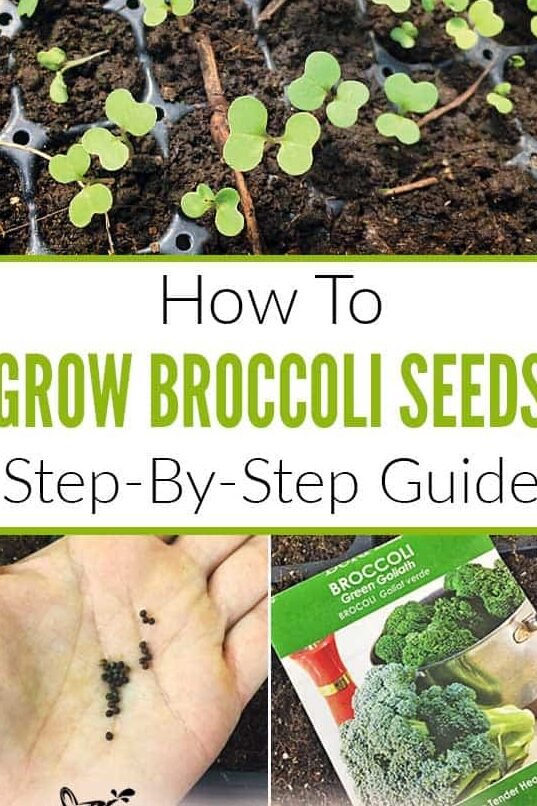
Whether you’re a complete beginner or just want to learn more about growing broccoli, this article has you covered!
So, what are you waiting for? Let’s get growing!
How to Grow Broccoli in Your Vegetable Garden
Broccoli is a cool-weather plant, making it ideal for early spring or fall gardens. It belongs to the brassica family, which includes cauliflower, kale, and Brussels sprouts.
Packed with nutrients, broccoli is low in calories and high in fiber. It’s also a great source of vitamins C and K, as well as folate, potassium, and manganese. It’s easy to grow, and you can preserve it, making it a wonderful addition to any garden!
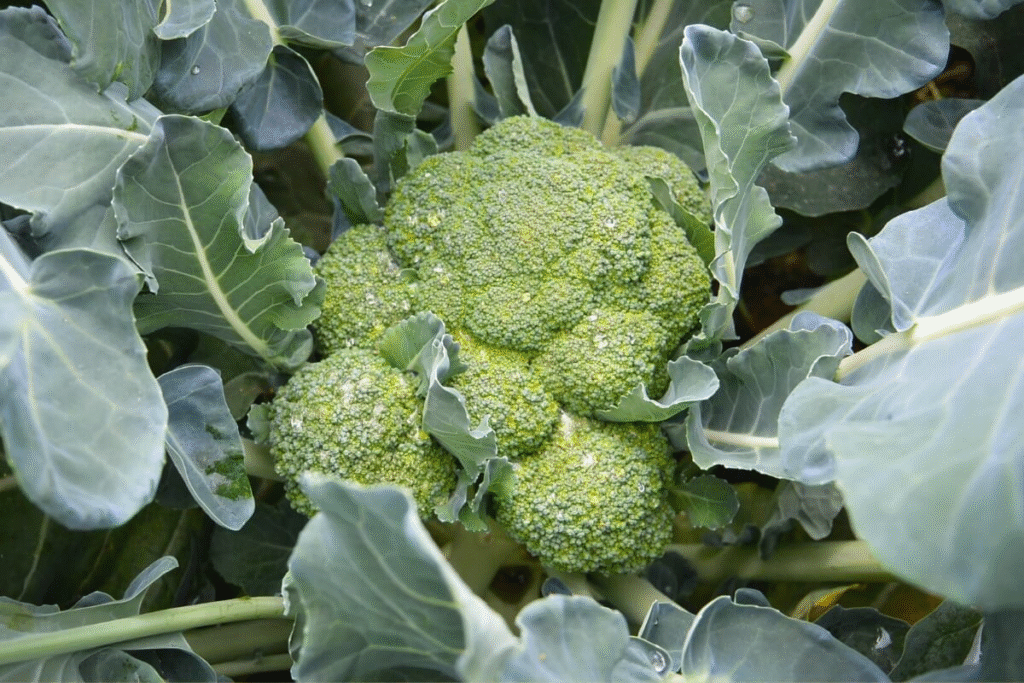
When and Where to Plant Broccoli
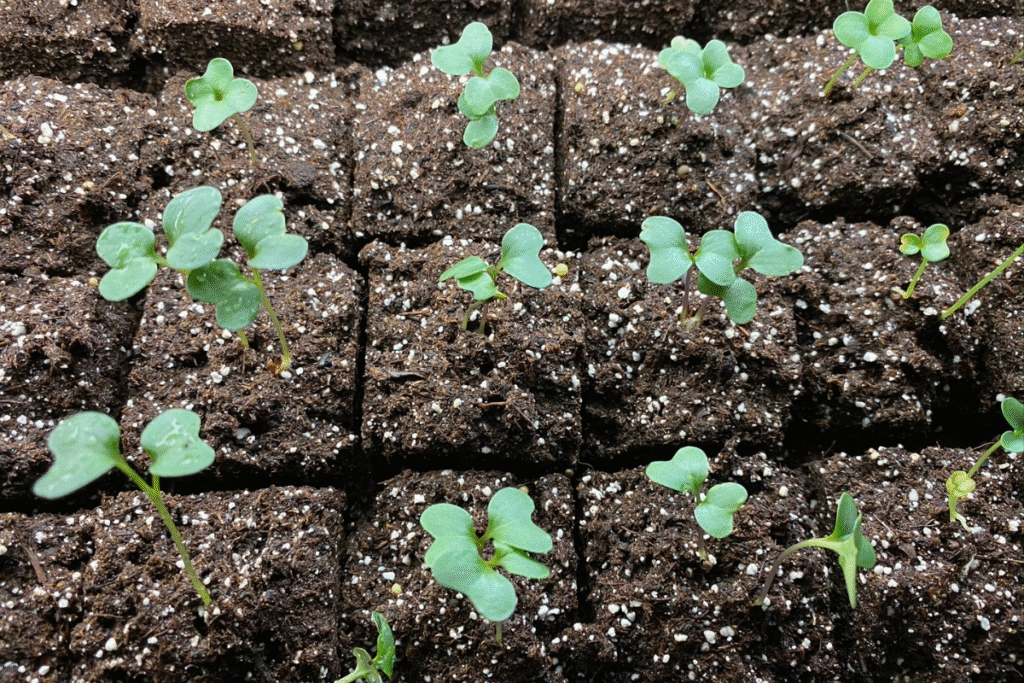
Broccoli loves cool weather, meaning it prefers temperatures below 80°F. Hot weather can cause the buds to open too early and the plant to bolt (go to seed).
Start broccoli seeds indoors about 8-10 weeks before your last frost date in early spring. If you’re growing in the fall, sow seeds about 100 days before your first frost date.
If it’s too hot or dry where you live, it’s a good idea to start your seeds indoors. When it comes to planting outside, choose a spot that gets at least 6-8 hours of sunlight per day. Broccoli grows bigger heads in full sun, while partial shade can lead to smaller plants and fewer heads.
How to Start Broccoli from Seed

Starting broccoli seeds indoors is simple. Use pots or trays (I recommend seed blocks or 6-pack planters) and plant one seed per block. If you’re not sure if your seeds are viable, plant two per cell to ensure at least one germinates. Sow seeds about ¼ inch deep and lightly cover them with soil.
Keep the soil moist and place the seeds in a sunny spot or under grow lights. Germination usually takes 5-10 days. You might need to transplant your seedlings once before moving them to the garden.
Once the weather is warm enough, start placing your seedlings outside during the day to help them acclimate. For cool-weather crops like broccoli, temperatures above 40-45°F are fine for this hardening process.
When your seedlings have 4-5 true leaves and the weather is warm enough (no more low 20s), you can transplant them into the garden. Make sure to water thoroughly at planting time.
Alternatively, you can sow the seeds directly into the ground in spring. Space the seeds 12-24 inches apart, sowing in groups of 2-3 seeds, then thin them once they’re a couple of inches tall.
Caring for Growing Broccoli Plants
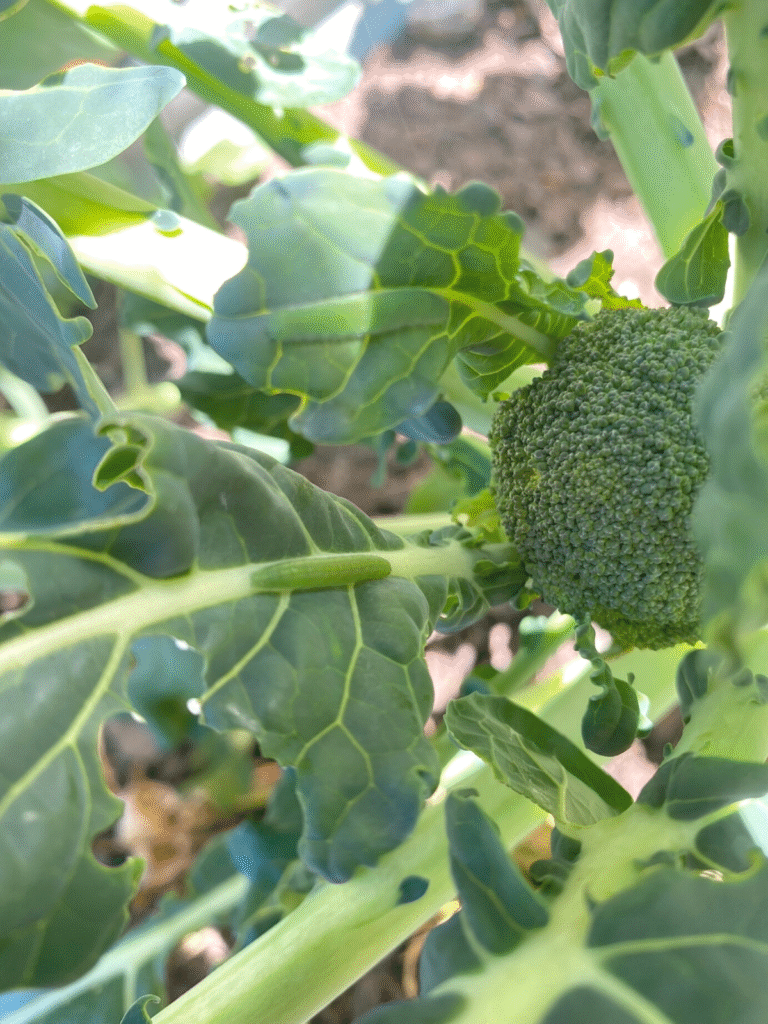
One of the best things about growing broccoli is that it doesn’t need constant care. But here are a few tips to ensure your plants thrive:
- Broccoli is a heavy feeder. It needs a lot of nutrients to grow big heads. At planting time, mix in organic compost and manure to feed the plants. I also recommend using Mycorrhizal fungi to help develop strong roots and larger plants.
- Cool temperatures are key. Broccoli grows best between 65° and 70°F. If you live in an area where the temperature quickly jumps from cold to hot, try companion planting or mulching to keep the soil cooler.
- Broccoli has shallow roots. Be gentle when weeding. Mulch is a great way to reduce weeds without disturbing the roots.
- Consistent watering is essential. If you’re not getting regular rainfall, aim for at least a couple of inches of water each week. Water at the base of the plant to reduce the risk of rot or fungal disease.
Broccoli Pests and Diseases
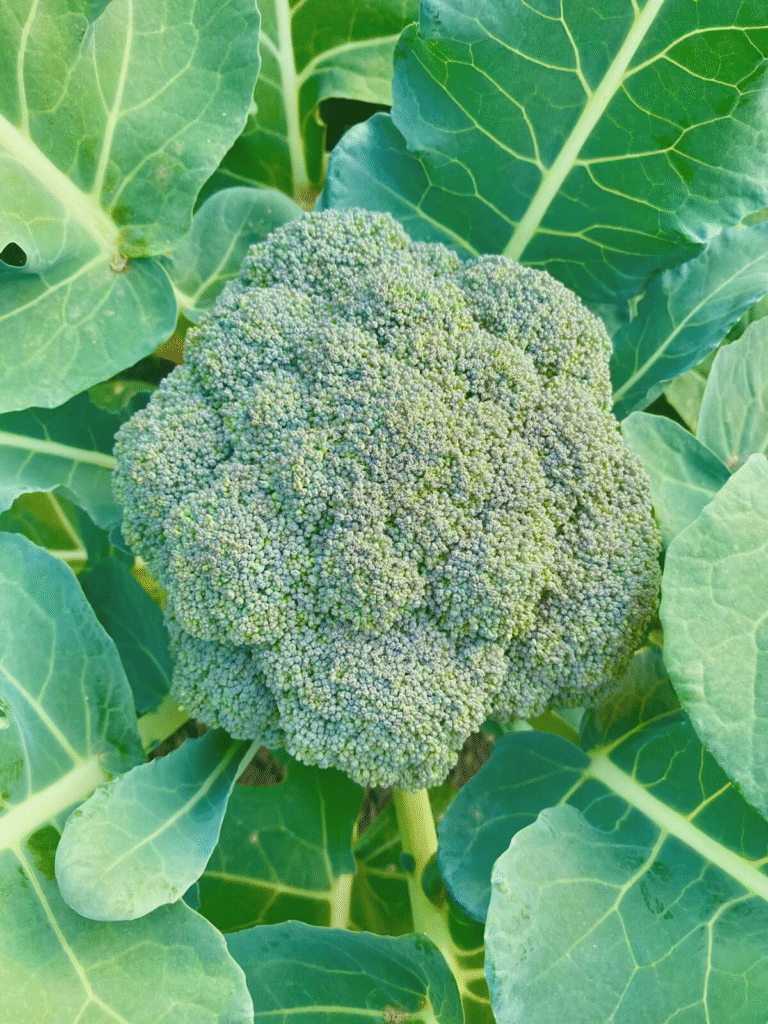
Pests can be a challenge when growing broccoli, and the biggest offenders are caterpillars.
In my garden, cabbage butterflies are the most problematic, but other pests like cabbage loopers and cabbage root maggots can also cause trouble.
You can fight back with organic methods. Bacillus thuringiensis is a soil bacteria that kills caterpillars when they eat it, but it’s safe for humans and pets. Handpicking the caterpillars and tossing them to chickens or birds is also an option.
Row covers can help keep pests at bay, too.
Other pests to watch for include aphids and white flies, while common diseases affecting broccoli are clubroot, downy mildew, and white rust—mostly fungal diseases. Proper spacing and crop rotation can help prevent these issues.
Harvesting Broccoli
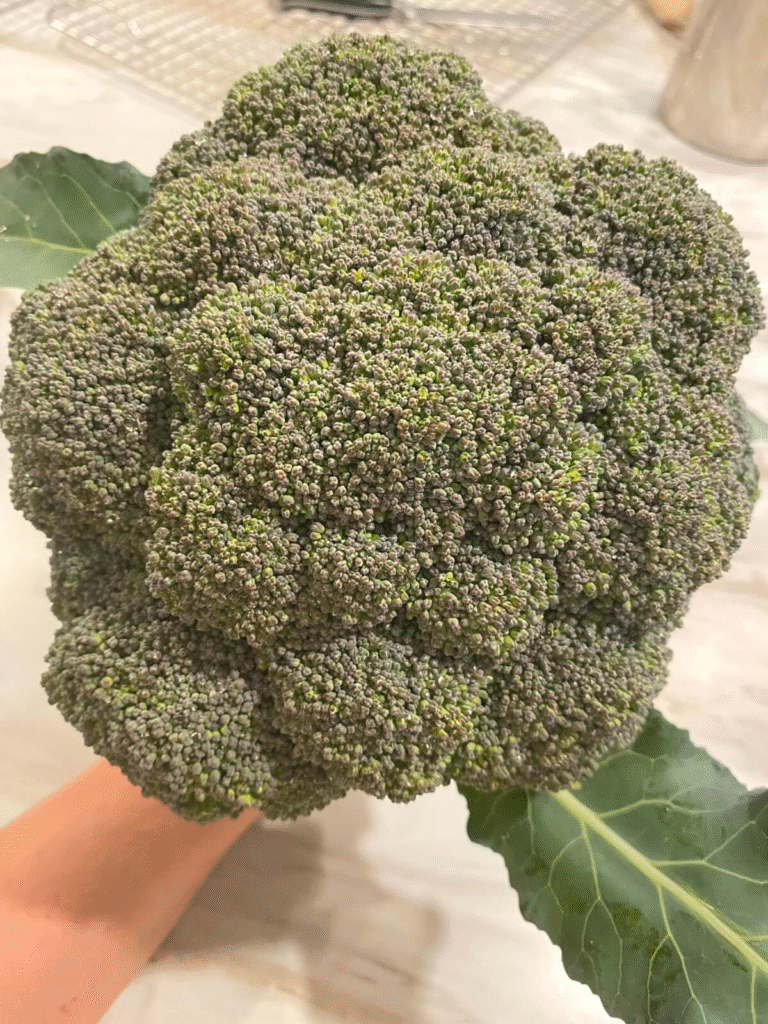
It’s time to harvest when the head stops growing and is a dark green color with tightly packed buds. If the buds start opening, loosening, or turning yellow, harvest immediately.
To harvest, use a sharp knife to cut the stem about 6-8 inches below the head. Cutting at a diagonal helps prevent water from collecting on the stem.
Once you’ve harvested the main head, don’t pull up the plant just yet! Most varieties will produce side shoots that you can harvest for weeks. Depending on your climate, you might even be able to harvest from the same plant throughout the summer or fall.
How to Preserve and Store Broccoli
Store fresh broccoli in the refrigerator’s crisper drawer, and be sure it can breathe. Avoid using a closed plastic bag—use a perforated bag or wrap it in damp paper towels instead.
For the best quality, use broccoli within 3-5 days, but don’t wash it before storing. If you want to keep it fresh longer, here are a few preservation methods:
- Freezing: Blanch broccoli for 1-2 minutes, cool it in ice water, then freeze it in a single layer before transferring to a freezer or vacuum-seal bag.
- Dehydrating: Cut broccoli into small florets and use a dehydrator at 125°F for 8-12 hours until it’s fully dry.
- Freeze Drying: Blanch for 1-2 minutes, cool it in ice water, and then freeze dry according to your machine’s instructions.
Properly preserved broccoli can last at least a year.
Growing broccoli is a rewarding experience, whether you’re an experienced gardener or just starting out. With some planning and care, you can enjoy fresh, homegrown broccoli in no time. So why wait? Start your broccoli garden today!
